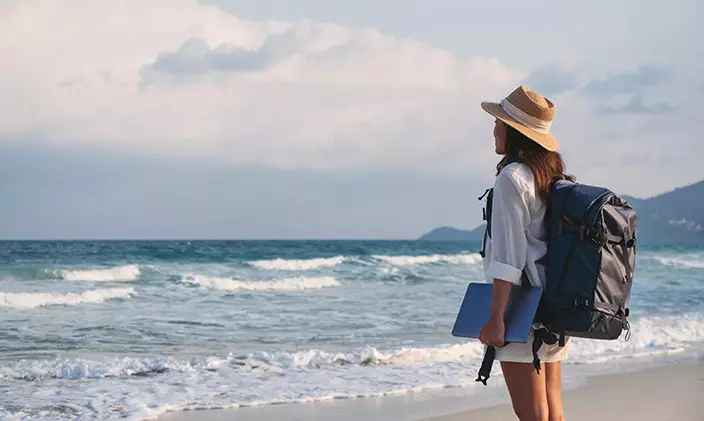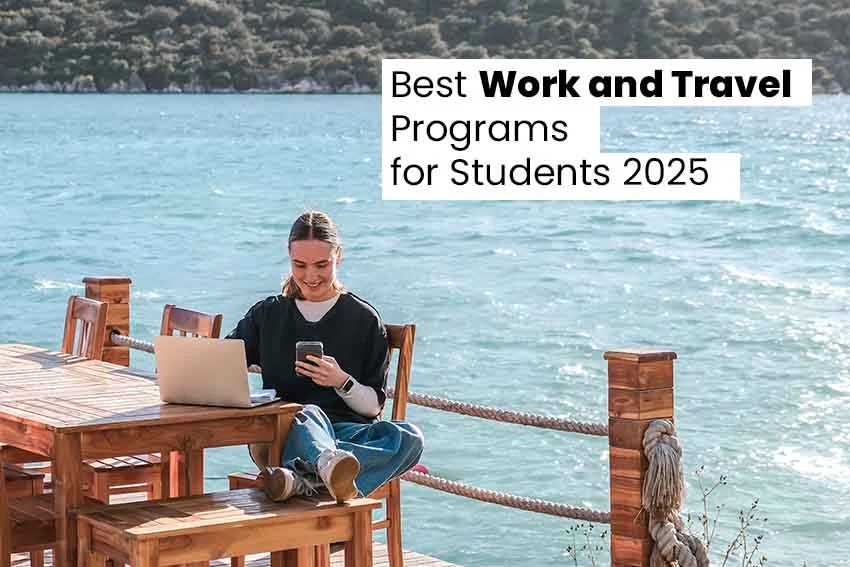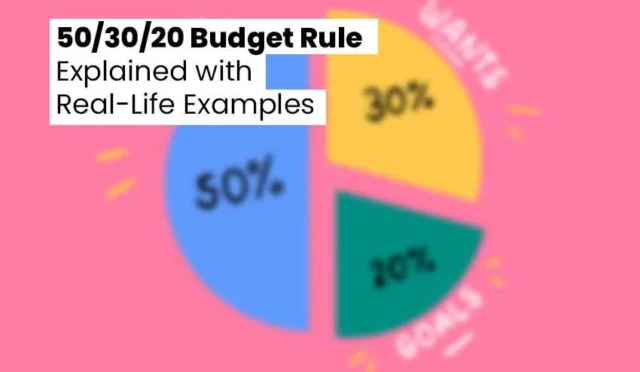Choosing work and travel programs for students in 2025 comes down to clarity: what do you want out of the experience—money, career growth, or cultural immersion? The right program can pay your way, supercharge your résumé, and give you stories you’ll tell for years.
The wrong fit drains your savings and your energy. This guide is a field-tested playbook to help you compare options fast, plan your budget honestly, and apply on time. You’ll learn how different work and travel programs for students handle pay, accommodation, and visas; what a realistic timeline looks like; and how to stand out even if you’ve never been abroad. By the end, you’ll have a shortlist, a calendar, and a week-by-week checklist to get from “maybe” to a boarding pass.
Contents
- 1 How to choose in 10 minutes
- 2 J-1 Summer Work Travel (USA)
- 3 J-1 Camp Counselor (USA)
- 4 Erasmus+ Traineeships (Europe & beyond)
- 5 IAESTE Paid Internships (Global, STEM-leaning)
- 6 AIESEC (Global Volunteer & Talent)
- 7 Working Holiday Visas: Canada, Australia, New Zealand
- 8 WWOOF (Organic Farms) & Workaway (Hostels/NGOs/Homestays)
- 9 BUNAC, JENZA & Multi-country Providers
- 10 TEFL & Summer Language Camps
- 11 Hospitality & Tourism Internships (Hotels, Resorts, Theme Parks)
- 12 Outdoor & Conservation Programs
- 13 Creative Placements (Media, Design, Events)
- 14 Compliance and safety (read this twice)
- 15 Budgeting without stress
- 16 Application timeline (generalized for 2025)
- 17 How to stand out (even with zero travel history)
- 18 Common mistakes (and easy fixes)
- 19 A 30-day action plan
- 20 Quick comparison: who should choose what?
How to choose in 10 minutes
Before you compare the work and travel programs for students, set three filters:
- Purpose: Do you need a paycheck, a career-aligned internship, or a low-cost cultural exchange?
- Time window: Summer break only, one semester, or up to a year?
- Budget: Can you handle an upfront program/visa fee, or do you need room/board included?
If an option misses any filter, drop it. The fastest way to find the best work and travel programs for students is to be ruthless about your outcome.
J-1 Summer Work Travel (USA)
For many, this is the classic path among work and travel programs for students: seasonal jobs during your summer break plus time to travel afterward. Roles are usually in hospitality, retail, or tourism. You pay a sponsor fee and visa costs, then earn local wages that can offset a big chunk of your trip.
Best for: social, structured summers with predictable timelines.
Timeline: Start 4–6 months in advance (sponsor, paperwork, interview).
Stand out: Be flexible on location and role; show up with customer-service energy and a readiness to work peak shifts.
J-1 Camp Counselor (USA)
If you like leading activities and working with kids, the camp route is one of the most rewarding work and travel programs for students. Compensation often includes room and board, so your out-of-pocket costs stay low while you gain leadership experience.
Best for: community vibe, built-in accommodation, cultural immersion.
Timeline: Apply by winter; camps lock staff early.
Stand out: Highlight coaching, mentorship, first aid, or any youth-work background.
Erasmus+ Traineeships (Europe & beyond)
If you’re at a participating university, Erasmus+ remains a powerhouse among work and travel programs for students who want career-aligned placements with funding support. You can match your field—marketing, engineering, education—with a host organization abroad.
Best for: résumé growth with partial funding and academic alignment.
Timeline: Coordinate with your international office early in the academic year.
Stand out: Pitch a clear internship project and agree on learning outcomes upfront.
IAESTE Paid Internships (Global, STEM-leaning)
IAESTE is a gold standard of work and travel programs for students in engineering and sciences: real work, real pay, real mentors. Placements can run from a few weeks to several months.
Best for: hands-on, paid technical experience.
Timeline: Watch listings year-round; some selections take weeks.
Stand out: A concise portfolio (GitHub, lab projects, maker builds) and a short “how I solve problems” statement.
AIESEC (Global Volunteer & Talent)
AIESEC combines leadership, international exposure, and projects tied to real-world problems. It belongs on any shortlist of work and travel programs for students seeking a mix of impact and experience—through volunteering or professional internships.
Best for: purpose-driven students who want community and responsibility.
Timeline: Rolling; choose by project theme and duration.
Stand out: Connect your studies to the project’s outcomes and offer a mini plan for your first two weeks.
Working Holiday Visas: Canada, Australia, New Zealand
Working holidays rank among the most flexible work and travel programs for students and recent grads. You can take casual jobs, travel between cities, and extend stays if eligible. Expect visa fees and proof-of-funds requirements.
Best for: freedom to earn as you roam.
Timeline: Start early—pools and processing times vary.
Stand out: Arrive with a one-page CV, local bank/SIM plan, and availability for weekends and holidays.
WWOOF (Organic Farms) & Workaway (Hostels/NGOs/Homestays)
These exchange-based options trade a few hours of help for accommodation (often meals). They’re the most budget-friendly work and travel programs for students, ideal for language practice, slow travel, and cultural immersion. Not salaried, but expenses stay low.
Best for: budget travelers who value community and learning.
Timeline: Choose hosts with robust reviews; book early for summer.
Stand out: Read the host profile thoroughly and propose a simple daily schedule you can keep.
BUNAC, JENZA & Multi-country Providers
If you want hand-holding—visas, job fairs, orientation—these providers package multiple work and travel programs for students into streamlined offerings. You pay more upfront but start faster with less uncertainty.
Best for: first-timers who want support.
Timeline: Earlier is better; group start dates fill.
Stand out: Use provider workshops to polish your CV and practice interviews before arrival.

TEFL & Summer Language Camps
Teaching English or assisting at language camps can be a smart entry among work and travel programs for students who like public speaking and coaching. Some roles cover housing or offer small stipends.
Best for: education majors or confident communicators.
Timeline: Recruiters hire in waves; be ready with documents.
Stand out: A short demo lesson and a clear classroom-management plan.
Hospitality & Tourism Internships (Hotels, Resorts, Theme Parks)
Paid internships in hospitality give you service skills that translate anywhere. For students comparing work and travel programs for students with solid training and clear shifts, hospitality is practical and in demand.
Best for: reliable hours and team environments.
Timeline: Seasonal; summer and holiday periods peak.
Stand out: Emphasize punctuality, teamwork, and guest-first communication.
Outdoor & Conservation Programs
Trail work, park stewardship, or eco-projects mix fitness with purpose. These work and travel programs for students are less about pay and more about impact, often providing housing during project blocks.
Best for: nature lovers who want visible results.
Timeline: Spring/summer cohorts.
Stand out: Show you can handle logistics, early starts, and varied weather.
Creative Placements (Media, Design, Events)
From festival crews to content production, creative gigs can be seasonal but career-shaping. They’re a niche slice of work and travel programs for students—great for portfolios and networks.
Best for: students who already tinker with video, design, or events.
Timeline: Apply as soon as dates drop.
Stand out: Share three samples and one short case note (problem → approach → outcome).
Compliance and safety (read this twice)
Every country defines “work,” “volunteering,” and “exchange” differently. Keeping work and travel programs for students smooth means matching activities to the visa you hold, carrying the right documents (passport validity, insurance, proof of funds, program letters), and being transparent about your plans at borders. Keep digital and paper copies, name files clearly, and have a fallback contact at your university, sponsor, or host.
Budgeting without stress
Front-load your big costs (visa, flights, insurance), then run a simple 50/30/20 split on your monthly cash once abroad:
- 50% Needs: housing, transport, groceries, phone.
- 30% Wants: trips, events, cafés.
- 20% Future: a cushion for surprise costs or the next leg of your journey.
If you’re weighing work and travel programs for students where wages vary, favor roles with either housing included or predictable weekly hours. Room/board at camps or exchanges keeps your burn rate low; hourly roles in tourist hubs can spike income in peak months. Track weekly, not monthly—you’ll course-correct faster.
Application timeline (generalized for 2025)
- Month -6: Pick your goal and shortlist two work and travel programs for students that fit your passport and dates.
- Month -5: Map costs, gather documents (passport, enrollment proof, CV, references).
- Month -4: Submit applications; schedule interviews; confirm housing options.
- Month -3: Book flights (refundable if possible); buy travel insurance; set up an arrival plan.
- Month -2: Confirm shifts or host dates; prepare a simple budget; tell your bank you’re traveling.
- Month -1: Scan and back up all documents; pack smart; share your itinerary with family.
- Departure month: Arrive early in the week, get a local SIM/bank option, and start with a small win—open a transit card, learn your commute, meet your supervisor.
How to stand out (even with zero travel history)
- One-page CV tailored to the role, plus a short cover note focused on outcomes.
- Punctuality and clarity: respond within 24 hours, confirm details, and ask one smart question.
- Proof of reliability: part-time jobs, volunteer work, sports teams—anything that shows commitment.
- Micro-portfolio: three samples (a short video, a design, a write-up) relevant to the placement.
Consistency beats charisma. Across work and travel programs for students, coordinators pick people who make their job easier.
Common mistakes (and easy fixes)
- Waiting too long. Seasonal work and travel programs for students fill quickly—apply months ahead.
- Underestimating costs. Add a buffer for deposits and the first two weeks before your first paycheck.
- Vague communication. Confirm shift times, housing rules, and what’s included in writing.
- Overpacking. Bring essentials and one comfort item. You’ll buy what you need locally.
- Ignoring insurance. It’s not optional—carry your policy and emergency numbers.
A 30-day action plan
Week 1: Define your purpose; shortlist two work and travel programs for students; list all documents needed.
Week 2: Draft your CV/cover note; create a three-item portfolio; ask two people for references.
Week 3: Submit applications; schedule interviews; price flights and insurance.
Week 4: Choose your offer; pay deposits; book the flight; set a budget; announce your dates to family and your university.
By day 30, you’ll have locked a spot and turned “someday” into a plan.
Quick comparison: who should choose what?
- Need income + friends: J-1 Summer Work Travel or Camp Counselor.
- Need career relevance + structure: Erasmus+ or IAESTE.
- Need freedom + flexible jobs: Working Holiday visas (Canada/Australia/NZ).
- Need low cost + immersion: WWOOF or Workaway.
- Need support + speed: Provider-led packages (BUNAC/JENZA).
This shortlist keeps work and travel programs for students aligned with your real goals—not someone else’s highlight reel.
There isn’t a single “best” choice—only the best fit for your purpose, timeline, and budget. If you want a social, structured summer, choose a camp or seasonal job; if you want career momentum, pick an internship; if you want maximum freedom, take a working holiday; if you want immersion on a shoestring, try an exchange host.
All of these are legitimate work and travel programs for students—what matters is that you commit early, keep paperwork tidy, and show up ready to contribute. Do that, and 2025 won’t just be a year abroad; it will be the year you grow up fast, earn real skills, and collect stories you’ll tell for the rest of your life.
Ready to take off? Explore our Work & Travel guides for program picks, timelines, budgets, and visa tips:
Explore the Work & Travel category →




